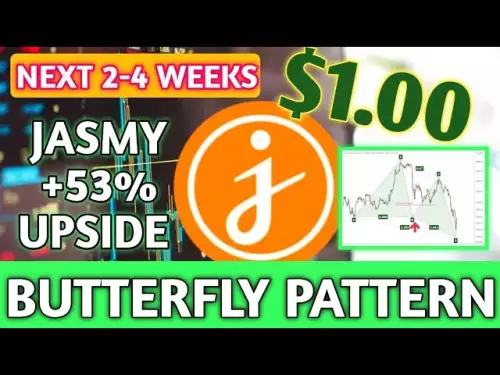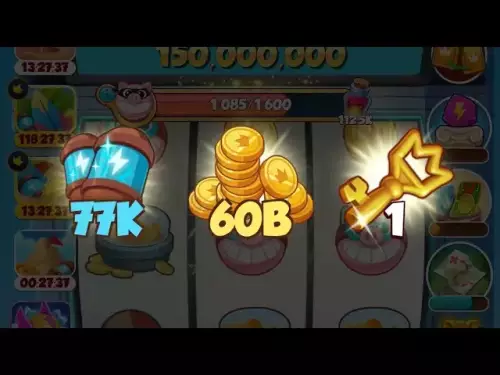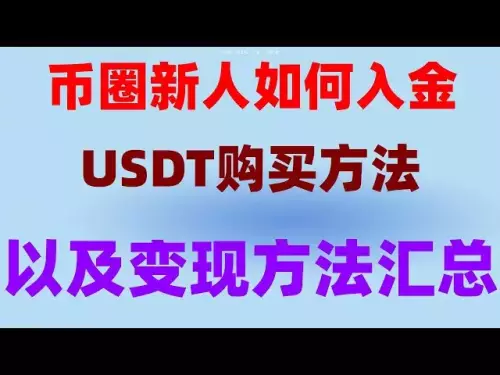-
 Bitcoin
Bitcoin $109500
-2.65% -
 Ethereum
Ethereum $4367
-7.16% -
 XRP
XRP $2.866
-4.11% -
 Tether USDt
Tether USDt $1.001
0.08% -
 BNB
BNB $834.2
-3.96% -
 Solana
Solana $186.7
-8.35% -
 USDC
USDC $0.9998
0.00% -
 TRON
TRON $0.3407
-4.70% -
 Dogecoin
Dogecoin $0.2086
-8.02% -
 Cardano
Cardano $0.8338
-6.54% -
 Chainlink
Chainlink $23.32
-8.27% -
 Hyperliquid
Hyperliquid $42.61
-6.17% -
 Ethena USDe
Ethena USDe $1.001
0.04% -
 Stellar
Stellar $0.3846
-4.40% -
 Sui
Sui $3.346
-7.20% -
 Bitcoin Cash
Bitcoin Cash $542.2
-6.29% -
 Avalanche
Avalanche $23.25
-8.12% -
 Hedera
Hedera $0.2314
-5.09% -
 UNUS SED LEO
UNUS SED LEO $9.576
-0.02% -
 Litecoin
Litecoin $109.6
-5.50% -
 Toncoin
Toncoin $3.120
-4.62% -
 Shiba Inu
Shiba Inu $0.00001198
-6.25% -
 Uniswap
Uniswap $9.635
-10.26% -
 Polkadot
Polkadot $3.731
-7.97% -
 Dai
Dai $1.000
-0.01% -
 Cronos
Cronos $0.1536
-1.37% -
 Bitget Token
Bitget Token $4.465
-3.57% -
 Monero
Monero $263.8
-3.16% -
 Aave
Aave $316.1
-8.24% -
 Ethena
Ethena $0.6228
-8.35%
What are the most popular WMA periods used by crypto traders?
The Weighted Moving Average (WMA) gives more weight to recent prices, making it highly responsive for spotting trends in fast-moving crypto markets.
Aug 06, 2025 at 06:14 am
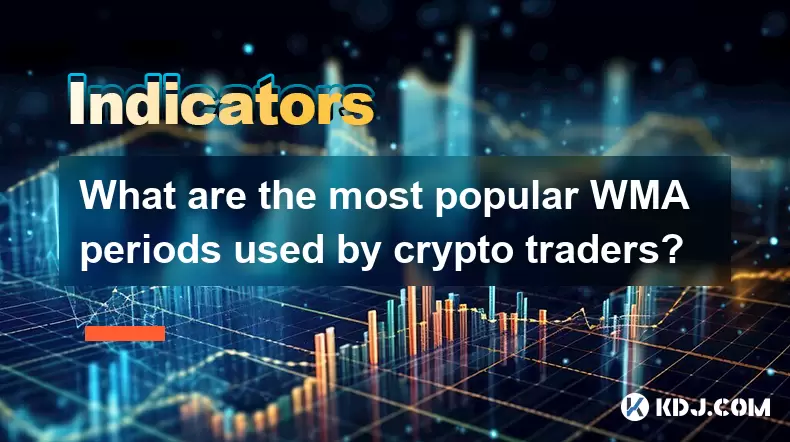
Understanding WMA in Cryptocurrency Trading
The Weighted Moving Average (WMA) is a technical indicator widely used by crypto traders to analyze price trends over time. Unlike the Simple Moving Average (SMA), which assigns equal weight to all data points, the WMA gives greater importance to recent prices, making it more responsive to new information. This sensitivity is especially valuable in the fast-moving cryptocurrency markets, where price shifts can occur rapidly due to news, macroeconomic events, or market sentiment. The calculation of WMA involves multiplying each price in the data set by a weighting factor, with the most recent price receiving the highest weight. The sum of these weighted prices is then divided by the sum of the weighting factors.
Common WMA Periods in Crypto Trading
Crypto traders often rely on specific WMA periods to align with their trading strategies. The most frequently used periods include:
- 9-period WMA: Favored by day traders and scalpers for its quick response to price changes.
- 20-period WMA: Commonly used for short-term trend analysis and aligns well with a trading week’s worth of data.
- 50-period WMA: A mid-term indicator used to identify intermediate trends and support/resistance levels.
- 100-period WMA: Offers a broader view of market momentum and is often used by swing traders.
- 200-period WMA: Considered a long-term trend indicator, frequently watched for major support or resistance zones.
Each of these periods serves a different purpose. For example, the 9-period WMA is highly sensitive and can help traders enter or exit positions quickly, while the 200-period WMA acts as a benchmark for determining the overall market direction. Traders often combine multiple WMAs to confirm signals—for instance, using a crossover between the 50-period and 200-period WMA as a potential trend reversal indicator.
How to Apply WMA on Crypto Charts
Applying WMA on trading platforms like TradingView, Binance, or MetaTrader involves a few straightforward steps: - Open the chart for the desired cryptocurrency (e.g., BTC/USDT).
- Click on the "Indicators" button or search bar.
- Type “WMA” and select the Weighted Moving Average from the list.
- Adjust the period setting to the desired value (e.g., 9, 20, 50).
- Customize the color and line thickness for better visibility.
- Click “Apply” to add the WMA to the chart.
Once applied, the WMA line will appear overlaid on the price chart. Traders can add multiple WMA lines with different periods to compare trends. For instance, plotting both the 20-period and 50-period WMA allows for visual identification of crossovers, which may signal entry or exit opportunities. The platform will automatically recalculate the WMA as new candlesticks form, ensuring real-time accuracy.
Interpreting WMA Crossovers and Slope
One of the primary ways traders use WMA is by analyzing crossover signals and the slope of the WMA line. When a shorter-period WMA crosses above a longer-period WMA, it may indicate a bullish trend. Conversely, a downward cross could suggest bearish momentum. For example: - A 9-period WMA crossing above the 20-period WMA might signal a short-term buying opportunity.
- A 50-period WMA turning downward after a prolonged uptrend may warn of weakening momentum.
The slope of the WMA also provides insight into trend strength. A steep upward slope indicates strong buying pressure, while a flattening or declining slope suggests consolidation or reversal. Traders often combine WMA slope analysis with volume indicators to confirm the validity of the trend. For instance, rising volume alongside an upward-sloping 50-period WMA reinforces the bullish case.
Optimizing WMA for Volatile Crypto Markets
Cryptocurrency markets are known for their high volatility, which can lead to false signals when using lagging indicators like WMA. To improve reliability, traders apply several optimization techniques: - Use multiple timeframes to confirm WMA signals. For example, check if the 20-period WMA on the 1-hour chart aligns with the trend on the 4-hour chart.
- Combine WMA with oscillators like the Relative Strength Index (RSI) or MACD to filter out noise.
- Apply WMA to logarithmic price scales for long-term charts to account for exponential price growth.
- Adjust WMA periods based on market conditions—shorter periods during high volatility, longer ones during consolidation.
Some traders also use adaptive WMA settings, where the period dynamically changes based on volatility metrics like Average True Range (ATR). This helps maintain responsiveness without increasing false signals. Backtesting WMA strategies on historical data using platforms like BacktestZone or TradingView’s strategy tester can further refine period selection.
Popular Trading Strategies Using WMA
Many systematic trading approaches in crypto incorporate WMA as a core component. One common strategy is the WMA Ribbon, where multiple WMA lines (e.g., 10, 20, 30, 50) are plotted simultaneously. When the ribbons contract and begin to fan out, it may signal the start of a new trend. Another strategy involves using WMA as a dynamic support/resistance level. Prices bouncing off the 50-period WMA in an uptrend can be seen as a buying opportunity.Algorithmic traders often code WMA-based rules into their bots. For example:
- Buy when price closes above the 20-period WMA and the WMA is rising.
- Sell when price closes below the 50-period WMA with declining volume.
- Exit long positions if the 9-period WMA crosses below the 20-period WMA.
These rules are implemented using APIs from exchanges like Binance or Kraken, with bots executing trades automatically based on real-time WMA values.
Frequently Asked Questions
Q: Can WMA be used on all cryptocurrency timeframes?
Yes, WMA can be applied to any timeframe—from 1-minute charts for scalping to weekly charts for long-term investing. The key is selecting a period that matches the trading horizon. Shorter periods suit lower timeframes, while longer periods provide context on higher timeframes.Q: How does WMA differ from EMA in crypto trading?
While both WMA and Exponential Moving Average (EMA) prioritize recent prices, EMA applies a smoothing constant that gives exponentially decreasing weights, whereas WMA uses a linear weighting scheme. EMA is slightly more responsive, but WMA avoids the infinite lag of EMA by using a fixed period.Q: Is WMA effective during sideways crypto markets?
WMA tends to produce false signals in ranging markets due to price oscillations around the average. Traders often combine it with Bollinger Bands or ADX to detect low-volatility environments and avoid trading during consolidation.Q: Can I customize the weighting formula in WMA?
Most trading platforms use a standard linear weighting formula (e.g., for a 5-period WMA: weights 5, 4, 3, 2, 1). Custom formulas require coding in environments like Pine Script on TradingView, allowing advanced users to modify weight distribution based on specific strategies.
Disclaimer:info@kdj.com
The information provided is not trading advice. kdj.com does not assume any responsibility for any investments made based on the information provided in this article. Cryptocurrencies are highly volatile and it is highly recommended that you invest with caution after thorough research!
If you believe that the content used on this website infringes your copyright, please contact us immediately (info@kdj.com) and we will delete it promptly.
- Heritage Distilling's Token Deal: A Bold Balance Sheet Strategy
- 2025-08-26 06:45:14
- Coinbase Hack, Solana Shenanigans, and Wallet Woes: What's a Crypto OG to Do?
- 2025-08-26 06:45:14
- Bitcoin, Institutional Adoption, and Volatility: A 2025 Perspective
- 2025-08-26 08:05:14
- MAGACOIN, Ethereum, and XRP Growth: What's the Buzz?
- 2025-08-26 08:30:13
- ETHZilla's Bold Moves: Share Buyback and Ethereum Holdings Under Scrutiny
- 2025-08-26 08:05:14
- Cardano, ADA Price, and the ETH L2 Meme Coin Frenzy: What's Next?
- 2025-08-26 08:50:13
Related knowledge
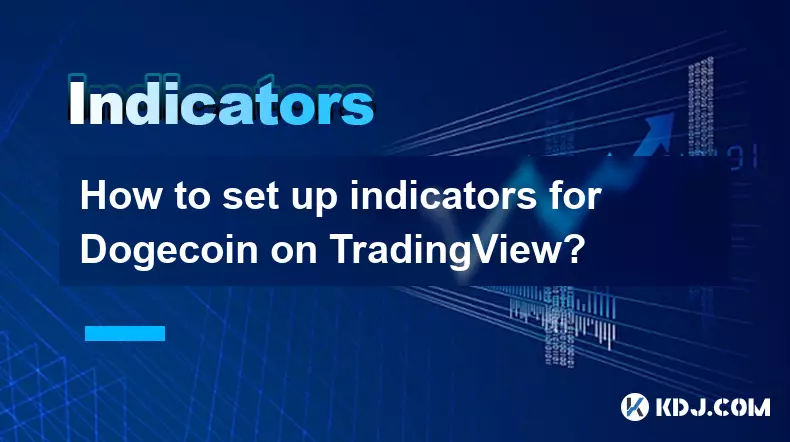
How to set up indicators for Dogecoin on TradingView?
Aug 25,2025 at 04:23pm
Understanding Dogecoin and TradingView1. Dogecoin, initially created as a meme-based cryptocurrency, has evolved into a widely traded digital asset. I...

What does it mean when the +DI and -DI cross frequently in the DMI indicator but the ADX is flattening?
Aug 11,2025 at 03:15am
Understanding the DMI Indicator ComponentsThe Directional Movement Index (DMI) is a technical analysis tool composed of three lines: the +DI (Positive...

What does the sudden appearance of a "dark cloud cover" candlestick pattern during an uptrend indicate?
Aug 13,2025 at 11:35am
Understanding the 'Dark Cloud Cover' Candlestick PatternThe dark cloud cover is a bearish reversal pattern in technical analysis that typically appear...

What does it mean when the moving average, MACD, and RSI all send buy signals simultaneously?
Aug 11,2025 at 01:42pm
Understanding the Convergence of Technical IndicatorsWhen the moving average, MACD, and RSI all generate buy signals at the same time, traders interpr...

What does it mean when both the KDJ indicator and the RSI show overbought signals simultaneously?
Aug 13,2025 at 11:35am
Understanding the KDJ Indicator in Cryptocurrency TradingThe KDJ indicator is a momentum oscillator derived from the Stochastic Oscillator, widely use...

What does it mean when the price is trading above the SAR indicator but the red dots are densely packed?
Aug 09,2025 at 11:49pm
Understanding the SAR Indicator and Its Visual SignalsThe SAR (Parabolic Stop and Reverse) indicator is a technical analysis tool used primarily to de...

How to set up indicators for Dogecoin on TradingView?
Aug 25,2025 at 04:23pm
Understanding Dogecoin and TradingView1. Dogecoin, initially created as a meme-based cryptocurrency, has evolved into a widely traded digital asset. I...

What does it mean when the +DI and -DI cross frequently in the DMI indicator but the ADX is flattening?
Aug 11,2025 at 03:15am
Understanding the DMI Indicator ComponentsThe Directional Movement Index (DMI) is a technical analysis tool composed of three lines: the +DI (Positive...

What does the sudden appearance of a "dark cloud cover" candlestick pattern during an uptrend indicate?
Aug 13,2025 at 11:35am
Understanding the 'Dark Cloud Cover' Candlestick PatternThe dark cloud cover is a bearish reversal pattern in technical analysis that typically appear...

What does it mean when the moving average, MACD, and RSI all send buy signals simultaneously?
Aug 11,2025 at 01:42pm
Understanding the Convergence of Technical IndicatorsWhen the moving average, MACD, and RSI all generate buy signals at the same time, traders interpr...

What does it mean when both the KDJ indicator and the RSI show overbought signals simultaneously?
Aug 13,2025 at 11:35am
Understanding the KDJ Indicator in Cryptocurrency TradingThe KDJ indicator is a momentum oscillator derived from the Stochastic Oscillator, widely use...

What does it mean when the price is trading above the SAR indicator but the red dots are densely packed?
Aug 09,2025 at 11:49pm
Understanding the SAR Indicator and Its Visual SignalsThe SAR (Parabolic Stop and Reverse) indicator is a technical analysis tool used primarily to de...
See all articles





















